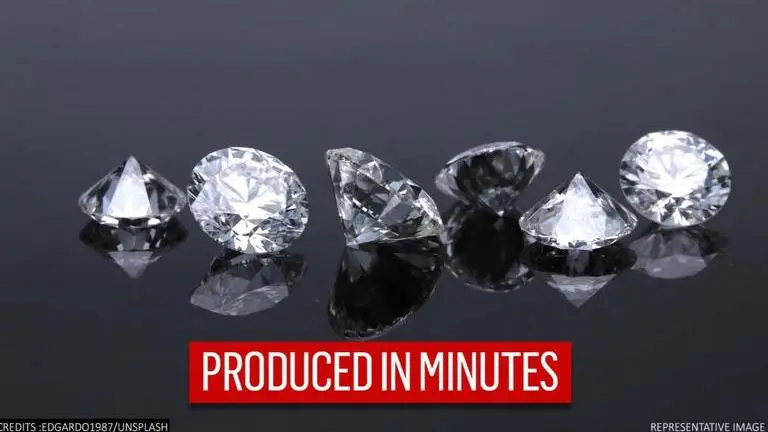Updated 25 November 2020 at 19:44 IST
Scientists create diamonds in lab at room temperature by mimicking asteroid collision
In a very unique creation, a team of scientists produced two types of diamonds in a lab within minutes by using asteroid collision.
- Science News
- 2 min read

In a very unique creation, a team of scientists produced two types of diamonds in a lab within minutes by using asteroid collision. The two types of diamonds include both, regular diamond and Lonsdaleite. Published in the Journal Small, the findings say that in a normal diamond, atoms are arranged in a cubic crystalline structure. However, Lonsdaleite is a different type of diamond.
Scientists produce diamonds
As per the research, Lonsdaliete is considered to be 58 per cent harder than the usual diamond. Diamonds have been synthesised in laboratories since the year 1954. It was after this that Tracy Hall at General Electric created them using a process that mimicked the natural conditions within the Earth’s crust. As a result of this, high-pressure, high-temperature diamonds were created which were similar to those which are found in nature. The other method of manufacturing diamond is the chemical-gas process which uses a small diamond as a “seed” to grow larger diamonds.
(This electron microscope image shows a ‘river’ of diamond in a ‘sea’ of Lonsdaleite. Image Credits: Conversation.com)
(In ‘shear’ forces, the object is pushed in one direction at one end, and the opposite direction at the other. Image Credits: Conversation.com)
(The crystal structures of cubic diamond and hexagonal Lonsdaleite have atoms arranged differently. Image Credits: Conversation.com)
Advertisement
As a part of this research, a small experiment was designed using a small chip of graphite-like carbon. It was then subjected to both extreme forces and high pressure. No additional heating was put to use. Using advanced electron microscopy, the sample which came as a result contained both regular diamond and Lonsdaleite. The structure was similar to “shear banding” which was observed in other materials. This suggested that shear forces led to the formation of these diamonds at room temperature.
Advertisement
(Image Credits: RepresentativeImage/Unsplash)
Published By : Akanksha Arora
Published On: 25 November 2020 at 19:46 IST



